Things are weird and getting weirder.
With all that uncertainty, it certainly seems like a good idea to something.
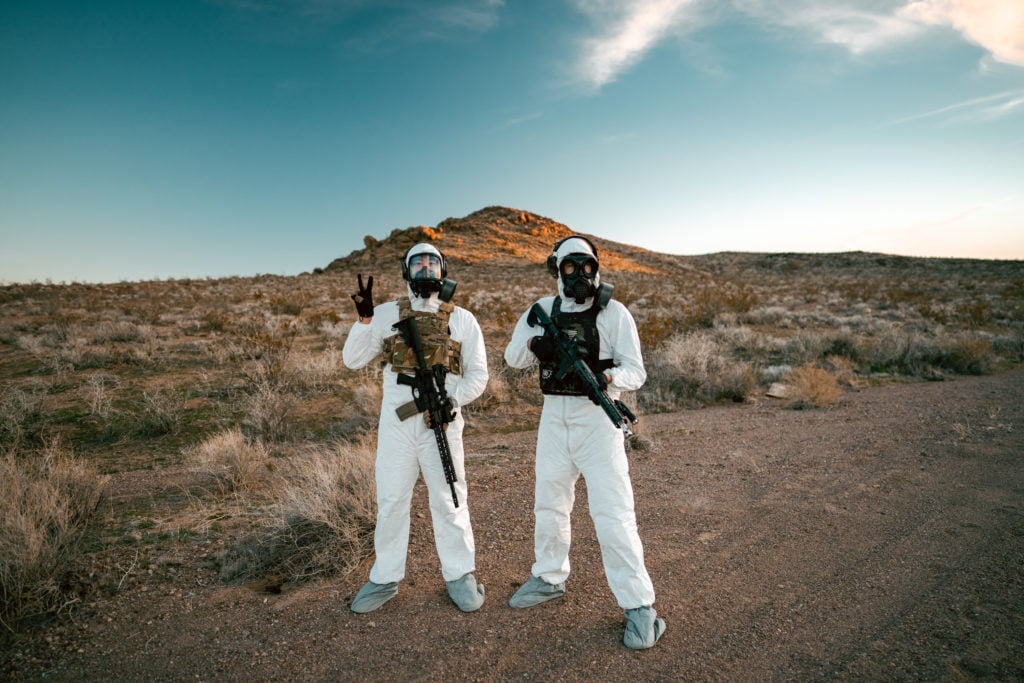
A lot of our minds are turning to the idea of emergency stockpiling and prepping right now, so we thought it was worthwhile to have a discussion about these things.
Particularly, we wanted to cover a variety of emergency situations, from earthquakes to wildfires to riots, so that you can tailor your emergency stockpile to meet your specific needs and the scenarios that you’re likely to have to face.
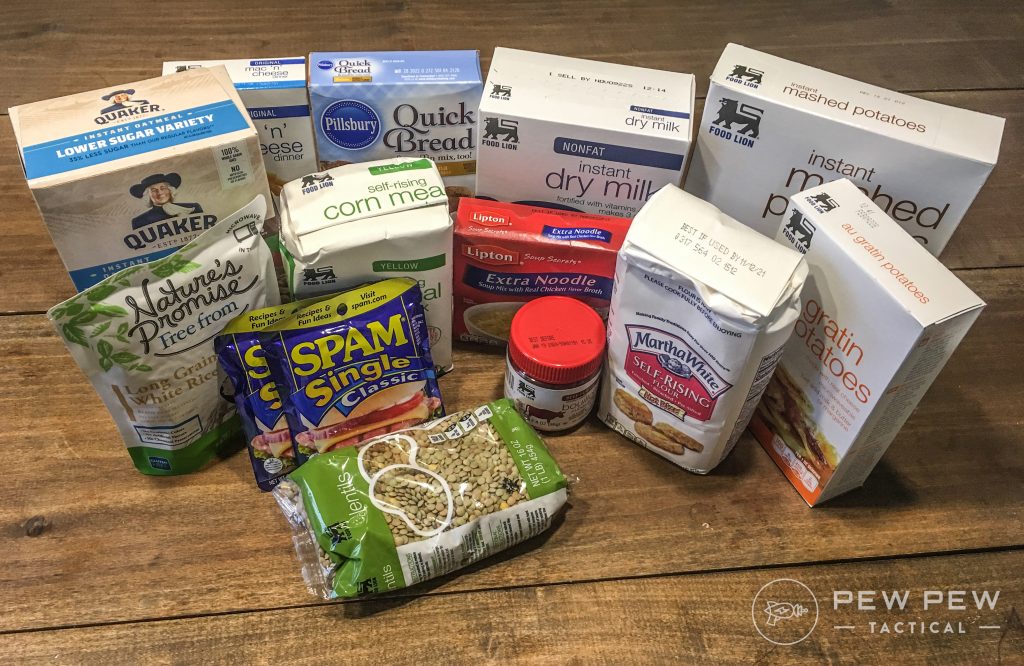
Prepping this way is more efficient than prepping for the end of the world, especially for the average person.
In this guide, we’re going to focus primarily on food and water, but expect additional guides for other topics in the future.

Now let’s talk about how to build your ideal, customized emergency stockpile.
Table of Contents
Loading…
Deciding How Long To Stockpile For
One of the first things you need to do is decide how long to stockpile. If you’re Jeff Bezos and you have the money for your own underground bunker with decades of MREs and bottled water stored, then ignore this.

For the rest of us, we typically have money, time, and space constraints that are going to limit what we can stockpile, so it’s important to spend these resources carefully when building our stockpile.
Budget
First, consider the budget you have available. For most of us, this is the biggest issue that dictates how long we can stockpile. With an unlimited budget, emergencies become trivial.

Realistically, you should set a budget for your initial setup. Then, set aside some money each month to add to your stockpile a little at a time.
This is actually much more effective when it comes to consumable supplies since they need to be swapped out fairly frequently anyway.
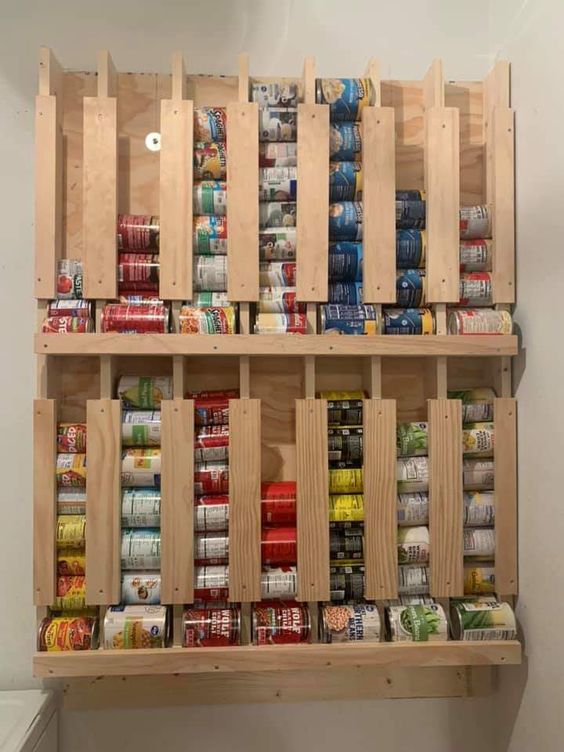
You can stretch your budget further by keeping an eye out for when things are on sale and stocking up then.
Space
Space constraints are another issue to keep in mind, especially if you have a small home.
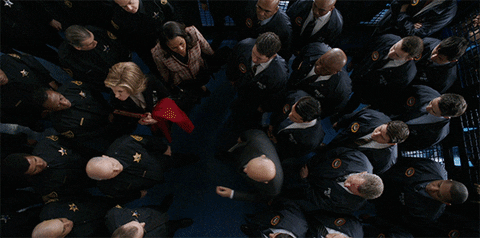
You don’t want it to be overrun with canned food and dried beans, but you also want to be prepared. If this is the case, prioritize the basics before you go all-in on a generator and a six-month stockpile of dehydrated food.
Most Likely Emergencies
Realistically, most disasters are going to impact you for a limited time. You’re far more likely to have to deal with a long-term power outage or food shortage than nuclear winter or a zombie uprising (though we’ll discuss those a bit too).

Plan for the events most likely to impact you and your family.
For example, if you live in California, earthquakes and wildfires should be your primary concern. If you’re on the Gulf Coast or Eastern seaboard, hurricanes should be foremost in your mind.
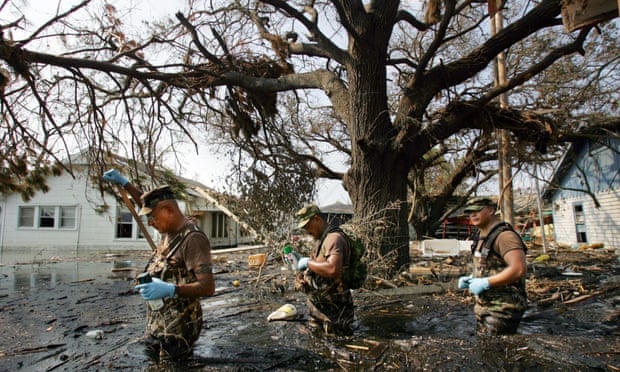
How to Build Your Stockpile
When we stay “stockpile,” we’re talking about more than just a go-bag equipped to last you for a few days — though every member of your household should absolutely have one.
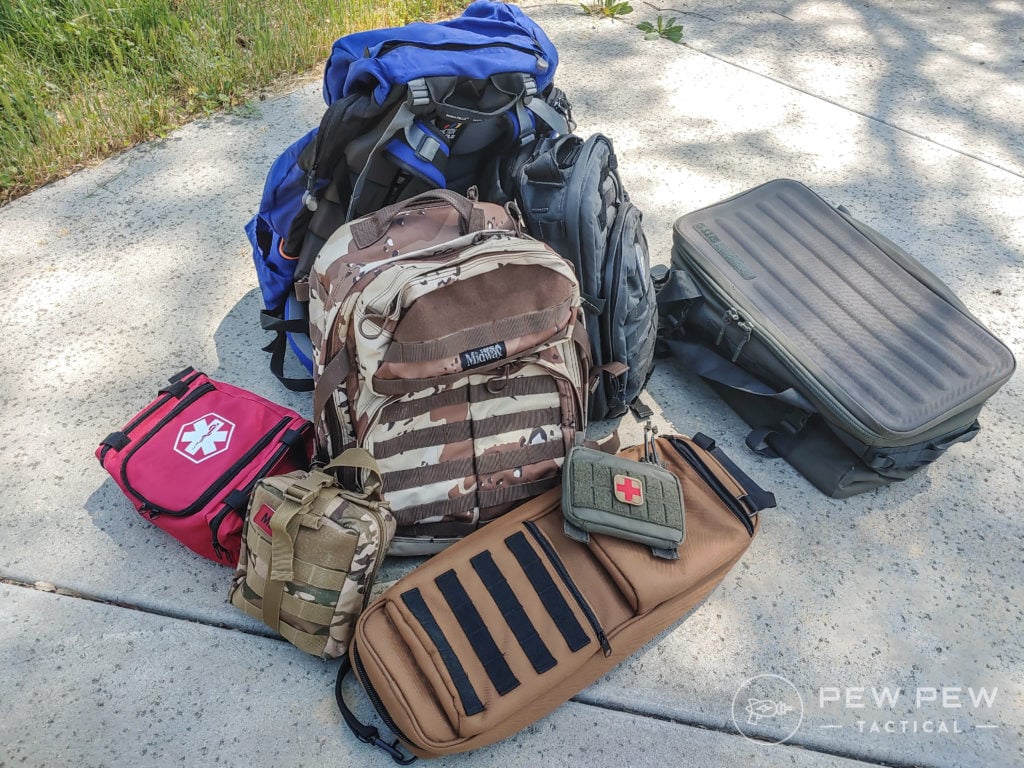
A stockpile is for a shelter-in-place scenario. Something where you’re stuck and have to live off your stored supplies for a while. You know, like if there was a pandemic or something.

Fueling Your Survival: How to Stockpile Food and Water
There are a few things you’ll need in any disaster scenario. If you’re still able to go to the grocery store as usual and the lights are on, it’s probably not much of a disaster, right?
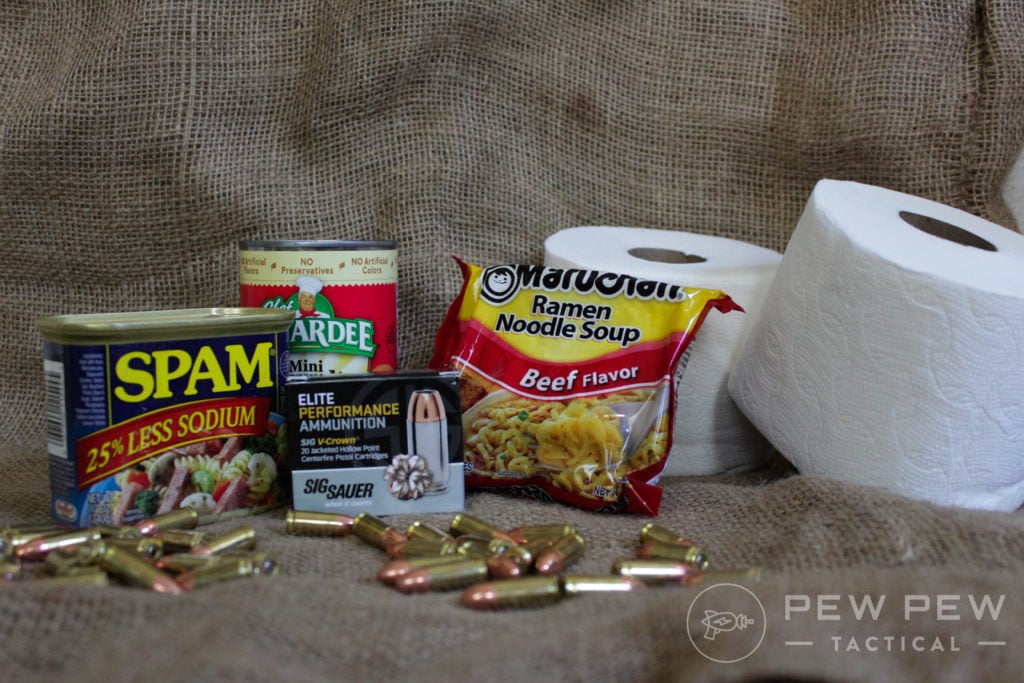
Here are the things you should always have on hand as part of your general preparedness.
Water: The Basics
Water is usually the most immediate need in any survival scenario except in very extreme cold. Storing potable water takes up space, but can satisfy your most urgent need in most scenarios.
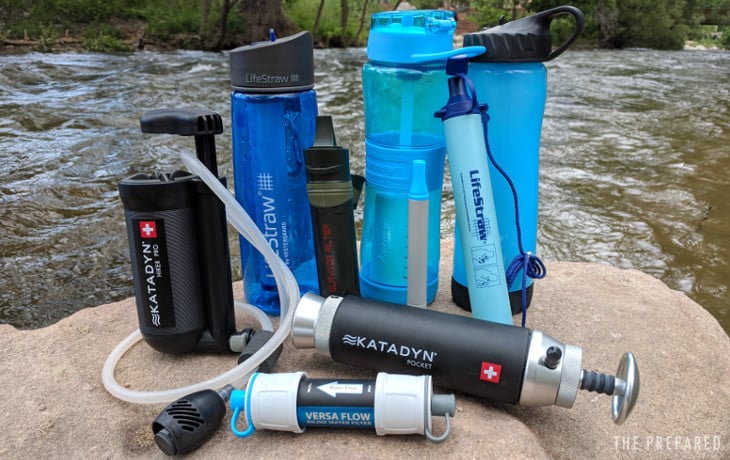
But how much water can you really store? The CDC recommends 3 liters per person, per day, and that’s just for drinking. It rises to between 7.5 to 15 liters per person per day if you include things like cleaning and hygiene.
That means for a family of four, you’re looking at about 120 liters of water for just 72 hours. And that’s being conservative. If you have the room to stockpile that, by all means, go for it.
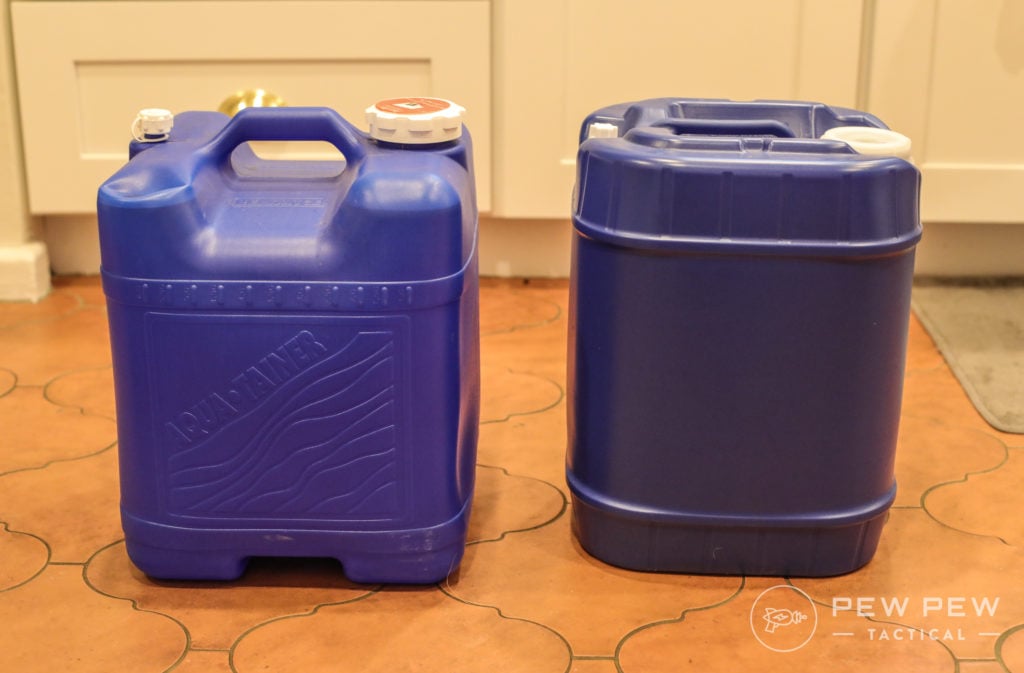
If not, maybe instead of stockpiling water, look into water filtration and purification. This is much more space-efficient than storing ready-to-drink bottled water, though having a few gallons on hand still isn’t a bad idea.
Water Treatment
Before we talk about options, let’s make sure you know what filtration and purification mean. Water filters remove particulates, bacteria, and protozoa from water, generally through osmosis.
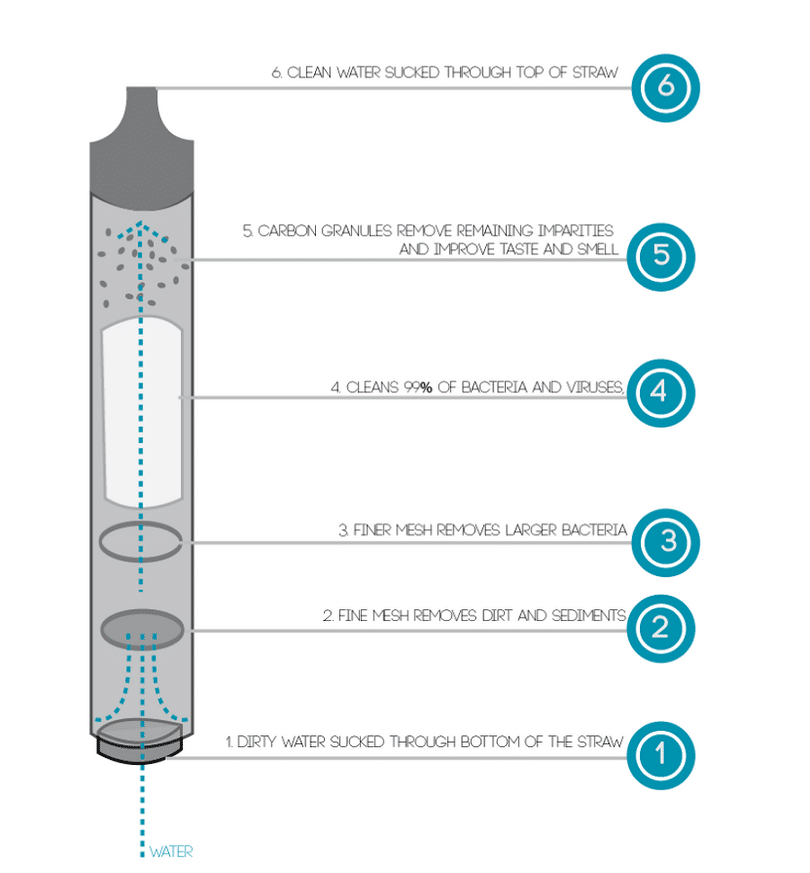
That means they send the water through a surface, such as clay, sand, or charcoal (or a combination of these), with pores small enough to prevent those unwanted things from flowing through. However, they don’t remove viruses.
Water purifiers, on the other hand, do remove viruses, as well as bacteria and protozoa, but not particulates. For the best, cleanest water, you’ll want to combine both purification and filtration.
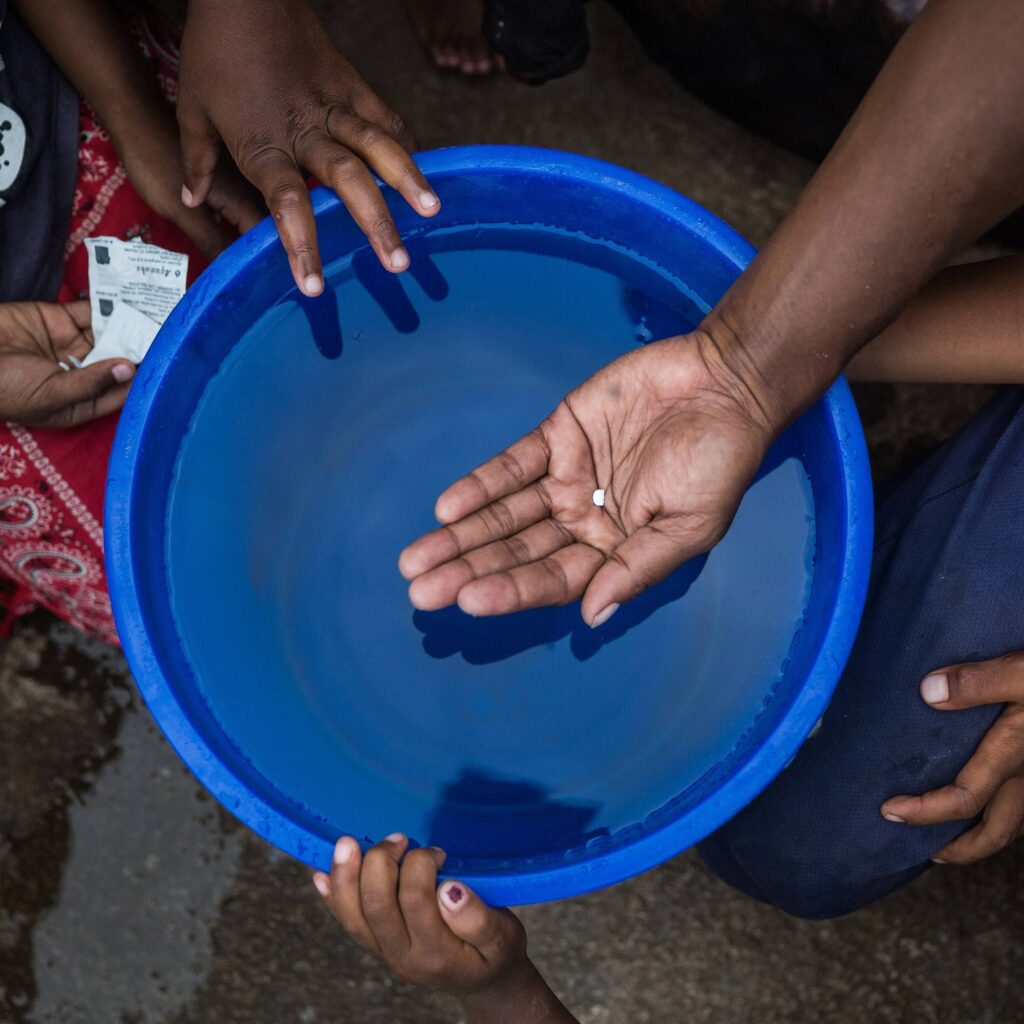
Bleach is a simple, easy-to-store water purification option. A large bottle of unscented bleach can treat an awful lot of water, especially coupled with a charcoal filter to remove particulates.
Water Preserver Concentrate works basically the same, but it’s a bit more predictable than bleach, which comes in different formulas and strengths and may have other ingredients in it. One little bottle can treat up to 55 gallons and keeps water safe to drink for five years.
-
25% off all OAKLEY products - OAKLEY25
Copied! Visit Merchant
There are chemical tablets for treating water, but they typically only treat a small portion of what a concentrate does. Plus they tend to leave an awful taste in your water. Some sets come with neutralizing tablets to eliminate that taste, but they still only treat a limited amount of water.
UV purification and boiling are also options, but it’s best to minimize reliance on power and fuel, which may be scarce or unobtainable.
-
25% off all OAKLEY products - OAKLEY25
Copied! Visit Merchant
Particulates aren’t typically an issue if you bought the water or got it from the tap ahead of the emergency, but it can be tricky if you’re gathering large quantities of water from an outdoor source later on.
In these situations, it’s better to purify the water after you bring it in, then filter it as you need it.
-
25% off all OAKLEY products - OAKLEY25
Copied! Visit Merchant
A pump or gravity-fed filter is your best bet. A few of our favorite water filter brands are MSR, Lifestraw, Survivor Filter, and Sawyer. These brands also make straw-style filters that also purify, allowing you to drink straight from the source.
-
25% off all OAKLEY products - OAKLEY25
Copied! Visit Merchant
Water Storage
If you’re in a place where water is scarce, then you should probably store more potable water. Same for if you’re in a flood-prone area. (I know, it’s counter-intuitive, but we’ll talk about why in a minute).
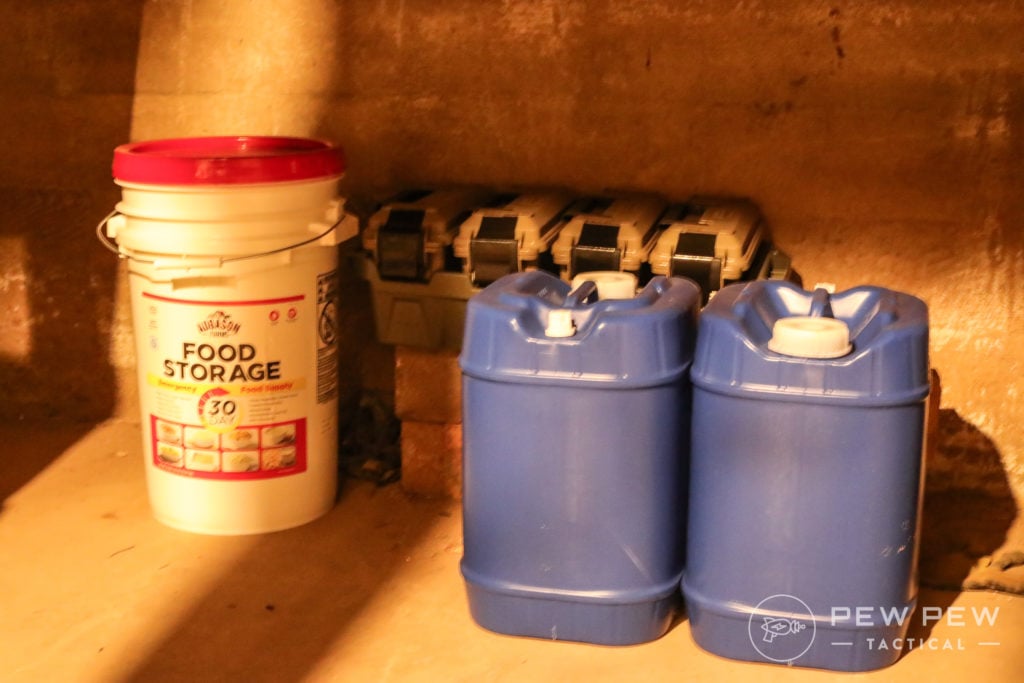
Other simple things to keep in mind here are a good water bottle or canteen (one for each member of the family) and some sturdy metal pots for boiling water in. You should also invest in a collapsible water carrier or two for additional storage.
-
25% off all OAKLEY products - OAKLEY25
Copied! Visit Merchant
These let you quickly store liters at a time, are easy to quickly fill from the sink in case of emergency, and take up very little space when empty.
-
25% off all OAKLEY products - OAKLEY25
Copied! Visit Merchant
When you know a storm is coming, you can fill your collapsible water carriers, plus other storage containers you have in your home, like pots, buckets, coolers, pitchers, etc. You may have heard the advice to fill up your bathtub with water before an emergency, but there can be a few problems with that.
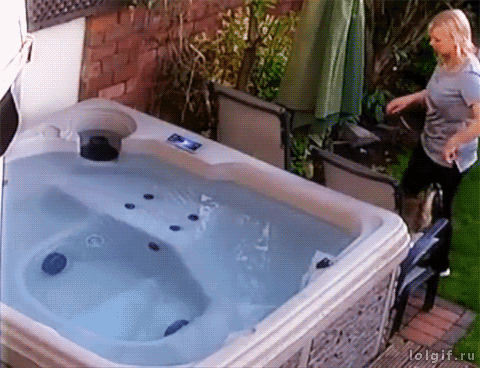
First, bathtubs can get a bit gross and germy anyway, and there are nothing germs love more than sitting water.
Second, most bathtubs have an overflow drain that prevents them from filling all the way. Plus, the large surface area allows water to evaporate, while drain seals are often not completely watertight, so water may be constantly trickling down your pipes, emptying your tub.
That’s where the WaterBOB comes in. It’s a giant 100-gallon bladder, similar to a Camelbak but large enough to fill a standard-size tub. This design keeps the water from making contact with the sides of your tub and avoids the issues of drainage and evaporation.
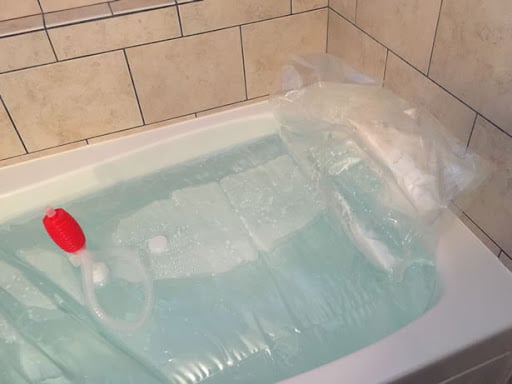
The WaterBOB has a nozzle that connects to your bathtub faucet for easy filling and a siphon pump that allows you to remove water when you need it.
-
25% off all OAKLEY products - OAKLEY25
Copied! Visit Merchant
Food: What You’ll Eat
Food is perhaps less pressing than water, but still important in a disaster, especially if you already live in a food desert. How much food you can stockpile depends on your space and your budget, but there are a few things you can do to keep some things on hand.
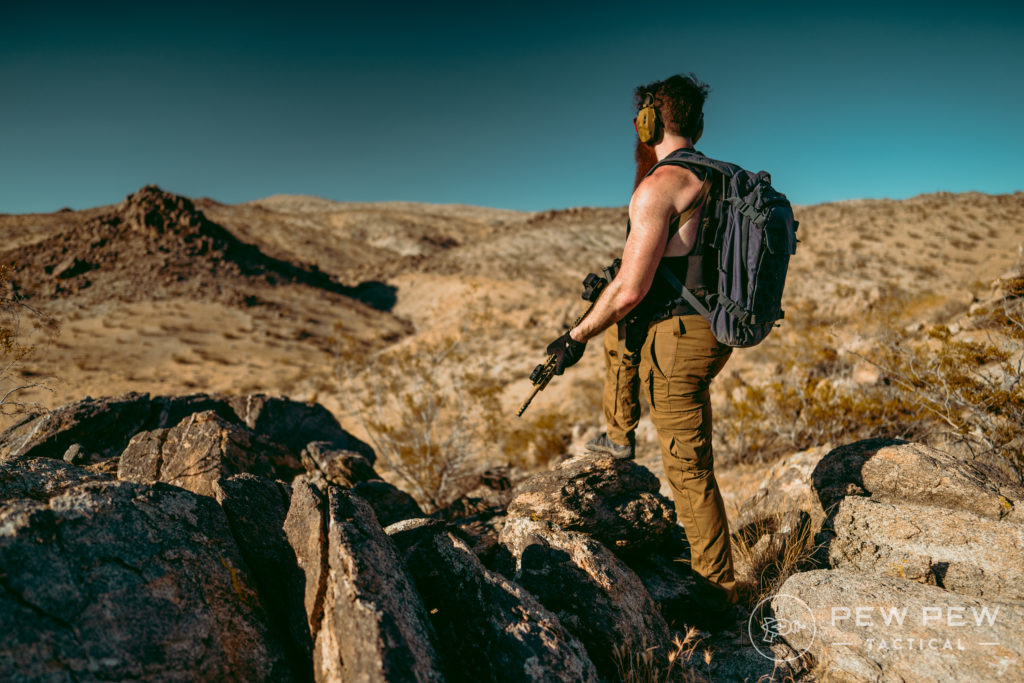
First, tailor your grocery shopping a little bit. Start buying extra peanut butter, extra canned goods, anything that you eat anyway that keeps for a while.
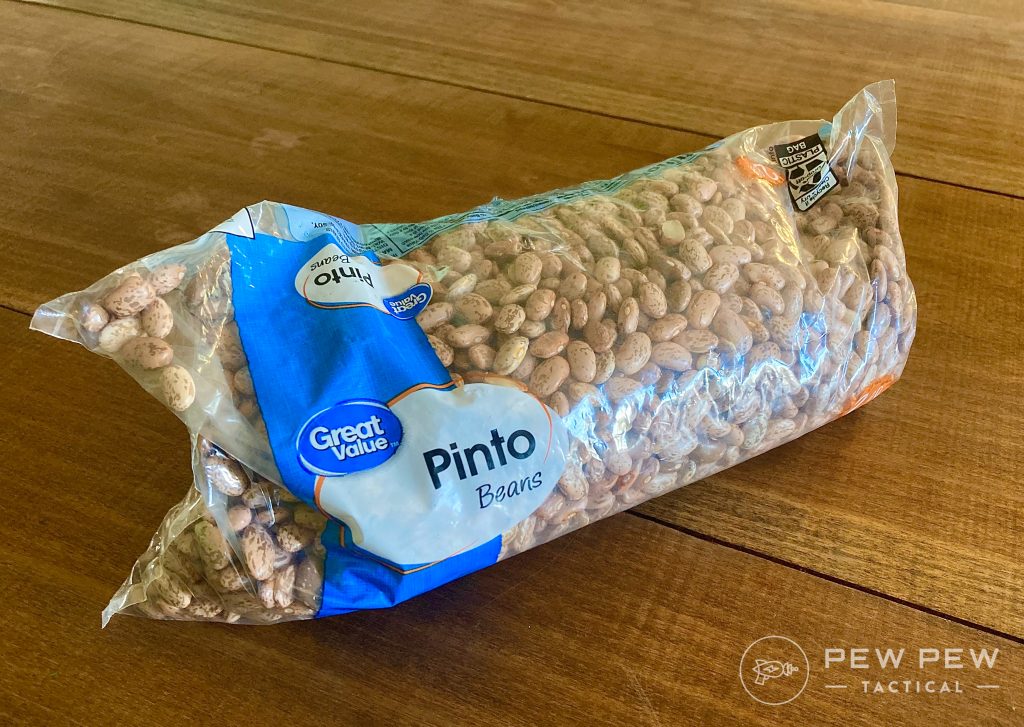
Dried beans, peas, chickpeas, and of course rice are all phenomenal options for a stockpile and can be rotated out when they get close to the expiration date very easily. Same goes for dried pasta.
Learning how to bake bread and a few ways to make jerky or other dried meats like pemmican can be a huge boost as well, and are just fun skills to practice.
Plus, jerky you make at home is going to be better and cheaper than what you get at the store.
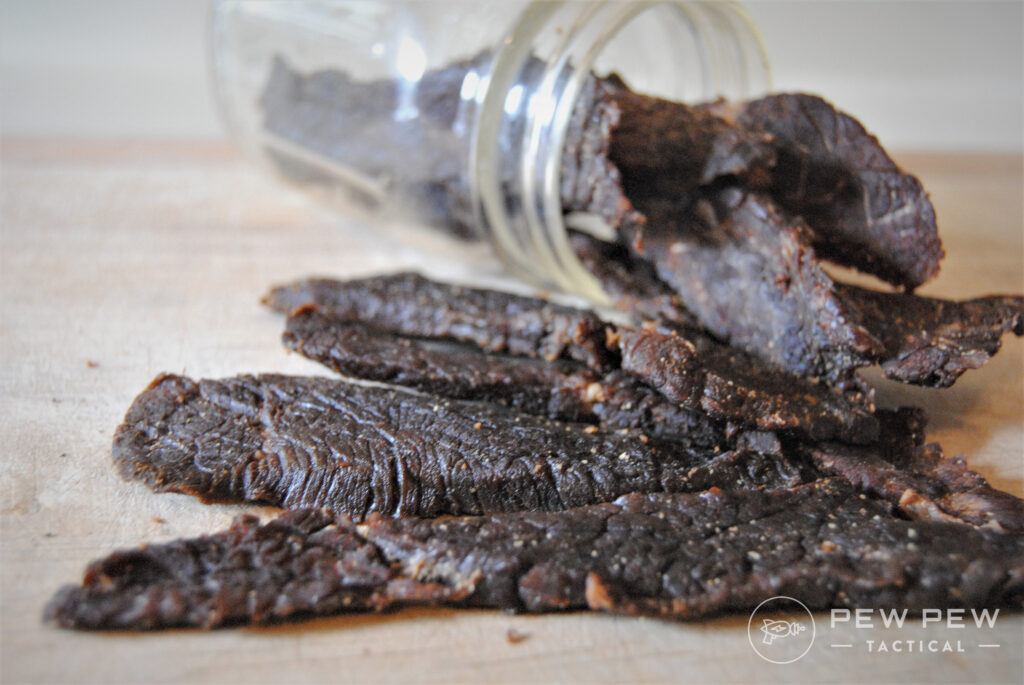
Also, flour, oil, salt, sugar, and yeast will last an awfully long time so bread is almost always an option. These ingredients can last anywhere from two to five years in a vacuum-sealed glass container. In more typical packaging, they can last between a couple of months and a couple of years.
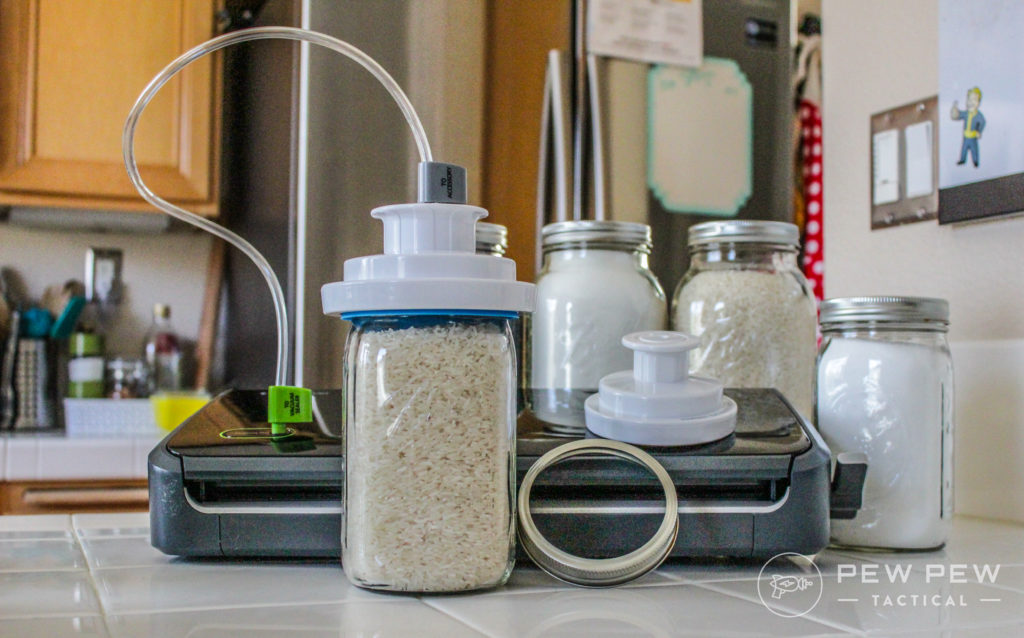
Memorize a good campfire bread recipe and you can turn it into hearty bread in no time.
For more calorie-efficient options, you can go all-in on freeze-dried survival meals. This is a phenomenally-portable option that is great for short-term kits. You can even get a full six-month kit for a family of four.
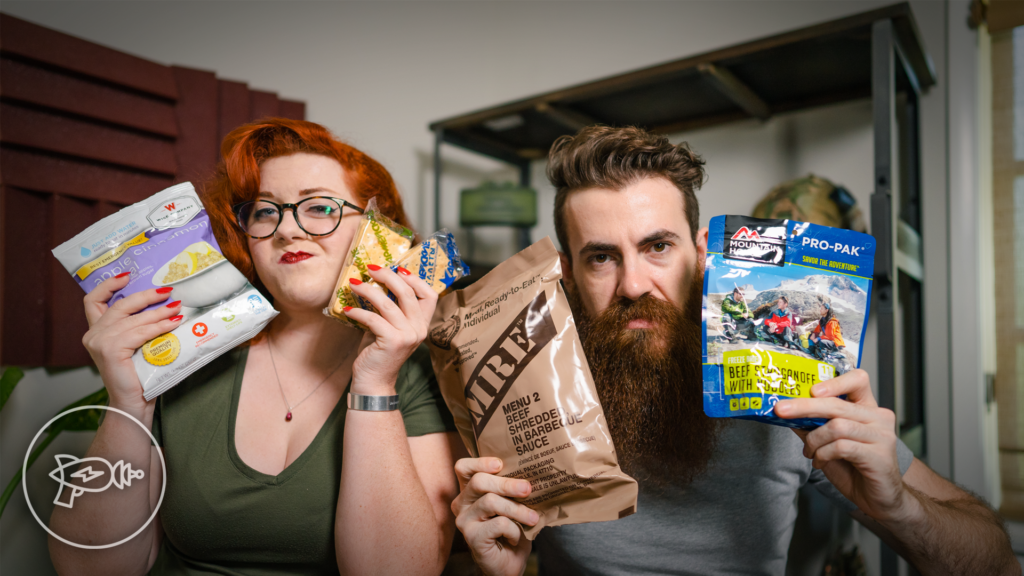
At the very least, have two or three of these meals in every person’s pack and you’ll be glad you did, especially if you have kids.
Food: How Much You Need
In addition, think a little about long-term survival. What if you’re without power for not just weeks but months? What if the food shortages at the grocery stores (something many of us have experienced during the pandemic) become food riots at the national guard post?
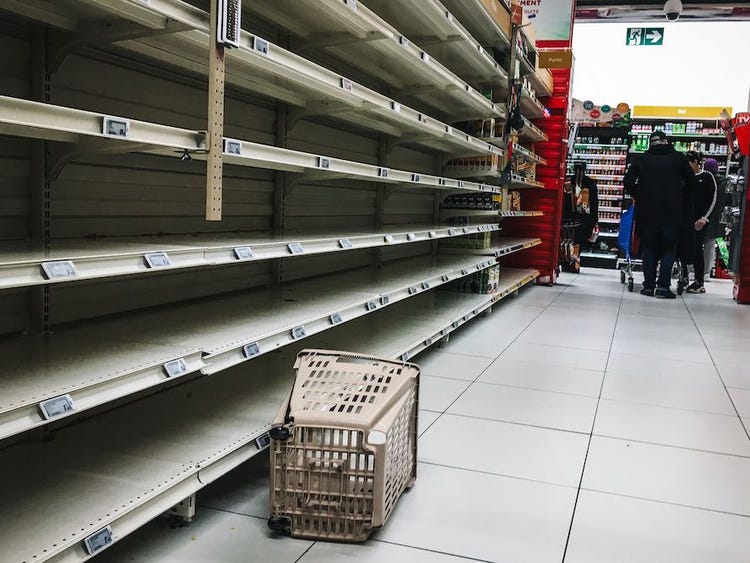
There are a couple of options for determining how much food you need.
First, there are online calculators that help you figure out how much of what the average family of your size and ages needs for a particular length of time.

However, you can also make a more customized determination by looking at what your family already eats. If you’re already a meal planner, you’re probably already familiar with this concept.
Look at some of your family’s favorite recipes and find ones that have ingredients that are good for long-term storage. If your family’s current favorites aren’t exactly stockpile-friendly, try out some recipes from The Prepper’s Cookbook or a similar resource to find some better options.
-
25% off all OAKLEY products - OAKLEY25
Copied! Visit Merchant
Once you have your recipes picked out, consider how many servings you get out of each meal and how many total servings you need for the amount of time you’re prepping for. From there, calculate how many times you need to make each meal to get the total number of servings you need.
Finally, look at the recipe and multiply the amounts of each by the number of times you’ll need to make the meal (plus a little extra) to know how much of each ingredient to store.

Let’s look at an example to help clarify that a bit. My emergency supply just needs to cover my husband and me (plus our pets, but they’re subsisting off of vacuum-sealed kibble and some canned wet food).
Let’s say one of our recipes is chicken spaghetti. We can get four servings total out of a box of pasta, a jar of sauce, and two cans of chicken.
With our other recipes taken into account, we need to be able to make chicken spaghetti twice a week to stay fed, so for a stockpile that will last four weeks or about a month, we’ll need four boxes of pasta, four jars of sauce, and eight cans of chicken.

Then, to be on the safe side, we’ll add an extra meal’s worth of each so we’ll store five boxes of pasta, five jars of sauce, and nine cans of chicken.
If we wanted to figure out how much for a stockpile for a longer time, we just multiply our ingredients list by however many months. So for a year, we multiply those monthly numbers by 12 to get 60 boxes of pasta, 60 jars of sauce, and 108 cans of chicken.
Make sense?

Using dehydrated meals is a little more straightforward, but you’ll still want to make sure you know how many servings your family actually gets out of each rather than relying on the serving count on the packaging.
Eat them at home to find out the number of servings each really contains to ensure you’re storing the right number.
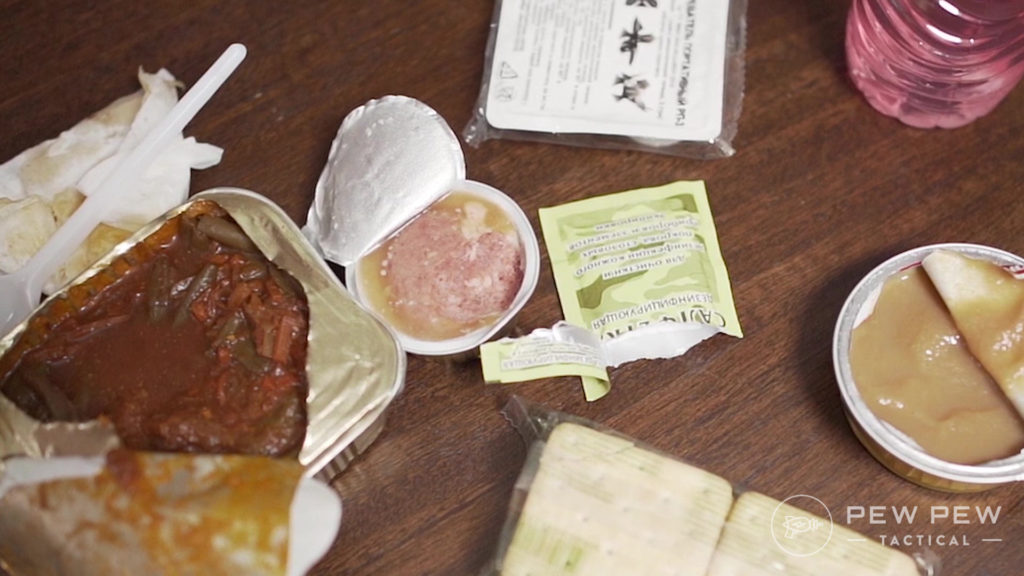
Items to sustainably replenish your food also have a place in a good stockpile. A good supply of plantable seeds as well as a fishing kit are great options for some more long-term security.
If you’re somewhere you can hunt, maybe keep a rifle and a couple hundred extra .30-06, .308, or what have you on hand too.
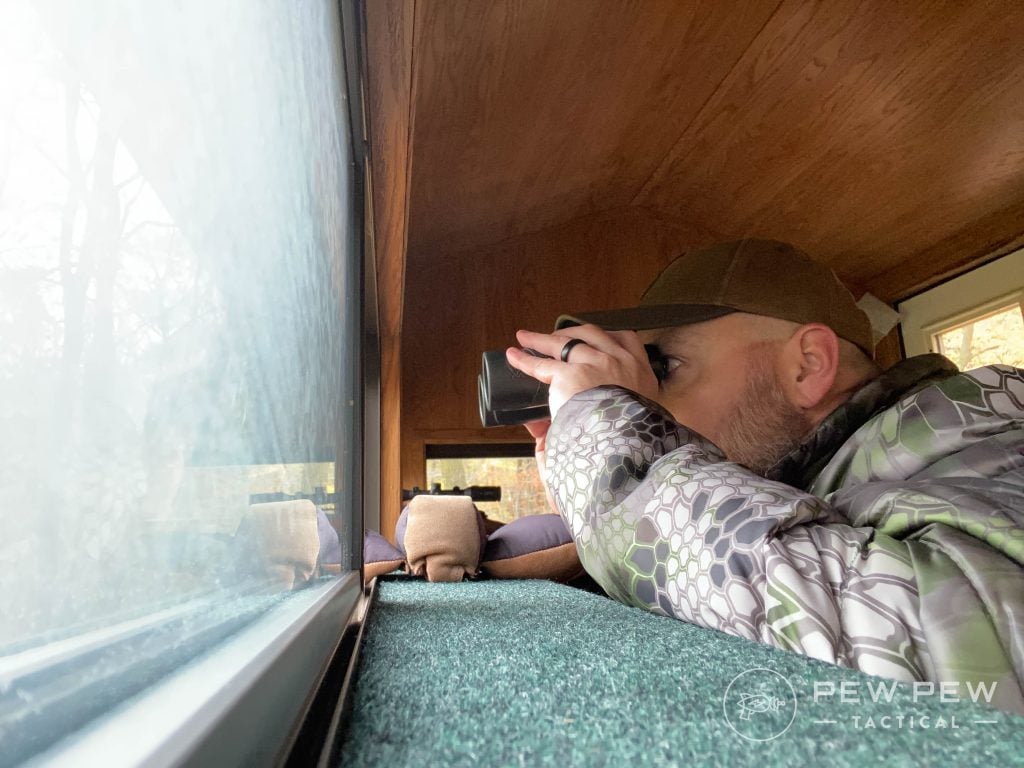
This is a place where you rural folks are at an advantage. A few pigs and some chickens out back are really the ultimate food stockpile.
Canning supplies and/or a dehydrator will help you keep what you grow, catch, or hunt good for longer, so you don’t have to waste when you end up with more perishable food than you can eat right away.
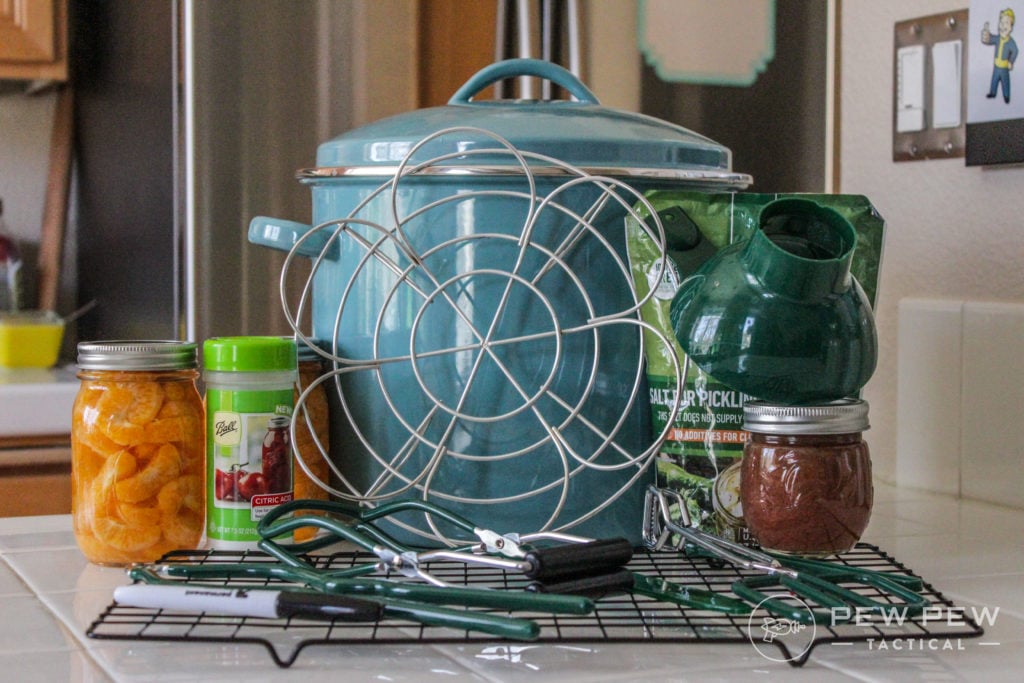
Food Storage
Now you know what kinds of foods you should have and how to figure out how much to keep on hand, so let’s talk about how to store the food so it lasts as long as possible.
First and foremost, airtight seals are your best friend in this situation.

There are tons of different types of containers in different sizes that provide airtight seals that you can cheaply and easily pick up online or at a local store.
However, vacuum seals are your best bet for long-term food preservation. Vacuum storage not only keeps air out, but also eliminates any air within the container. Canning is just one example of vacuum storage, but you can also use a vacuum sealer.
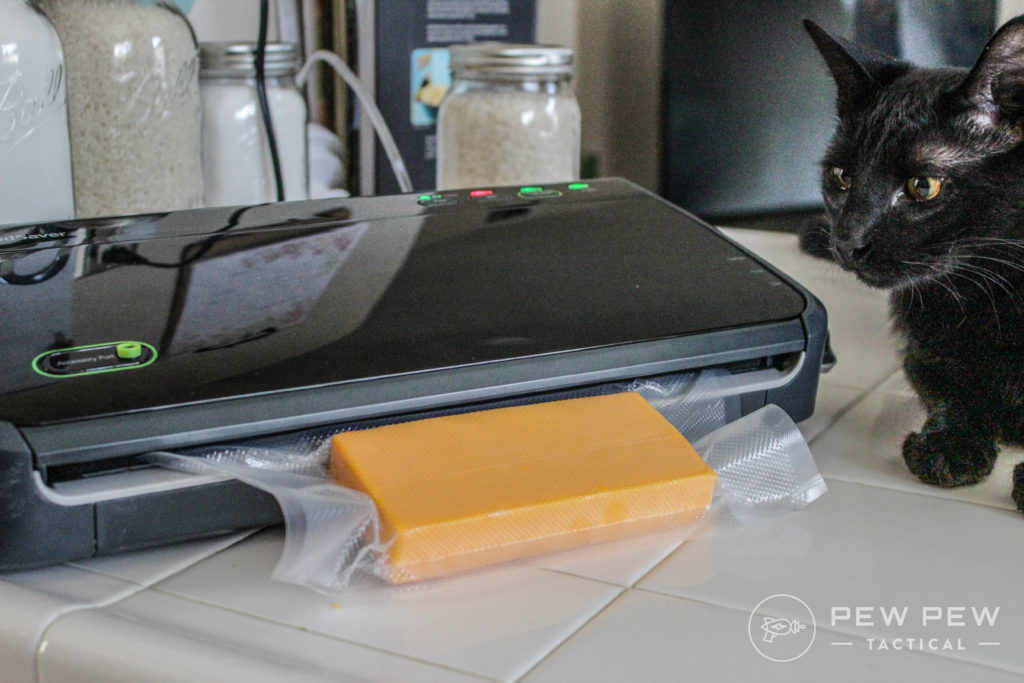
I personally own a FoodSaver vacuum sealing system. The particular model that I have can be used to seal custom-sized bags and FoodSaver plastic containers.
With the right accessories, it can also seal jars and bottles. However, it requires an electrical outlet, so a vacuum sealer is best for preparing food for stockpiling and shouldn’t be relied on for safely preserving food after an emergency has struck.

One last thing — while smaller containers are less space-efficient than larger ones, they’re easier to move around, and are often better for storage on shelving units. That means that if something goes wrong with one container, less total food is lost.
Prepping For Specific Emergency Situations
Once you have your general stockpile setup, it’s time to start thinking about your specific needs. First and foremost are the things you and your family require like medications and food for special diets.
Beyond that, think about what issues you’re most likely to face. If you live in a rural area, is a riot your biggest threat? Or should you be more worried about being stuck inside in a blizzard? How about having to evacuate to escape the impending arrival of a hurricane or wildfire?
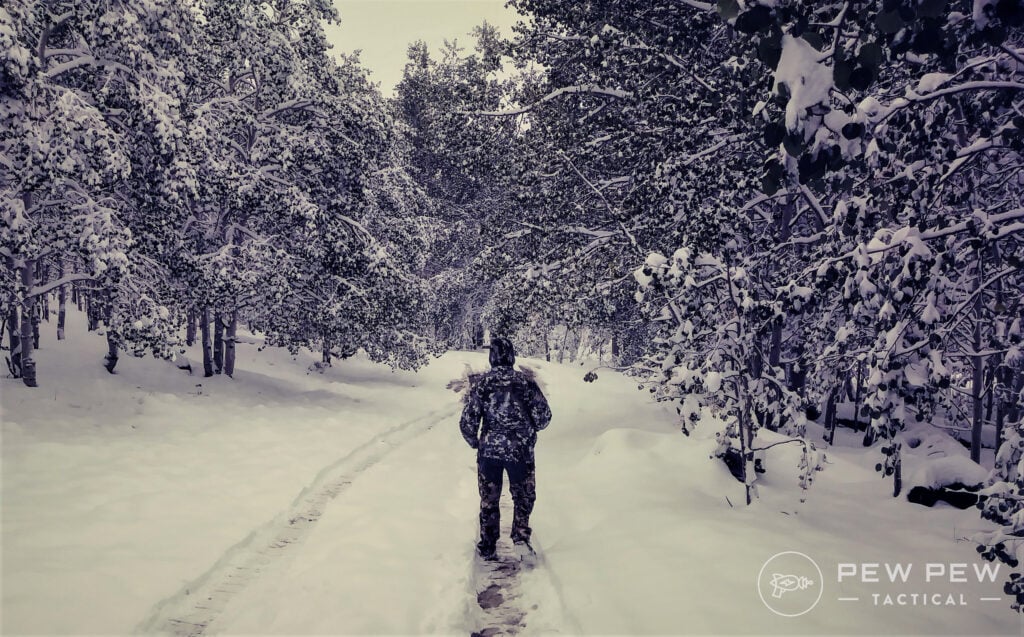
These are the types of things to consider when building a stockpile that meets your and your family’s needs. Not mine or some other survival expert’s. Yours.
Let’s look at some specific examples…
Blizzard
It’s January, you’re snowed in, the power is off and you can’t drive to the store. What do you do?
That’s right, you dig into the food you stockpiled back in June.

If blizzards are a concern for you, you can feel better about storing food that needs to be heated. Using a stove can help heat the space and eating warm food will help your body stay warmer.
Having enough food is especially important in a blizzard, though. Your body will need extra energy to stay warm. Plus, getting out to get food, even hunting or foraging, is a lot harder and requires your body to expend even more extra energy to stay warm in the cold temperatures outside.
May we also recommend heated jackets or heated gloves?
-
25% off all OAKLEY products - OAKLEY25
Copied! Visit Merchant
Make sure you actually have enough food or people are going to go from hangry to “get your ass out in that snow and don’t come back without a dead animal” real quick. Take a look at what the longest winter storm on record is, and then throw enough food for roughly double that in the pantry.
Earthquake
The biggest danger from an earthquake (after the shaking stops) is going to be from destroyed infrastructure. If rescue is going to take a long time to get there, what should you have on hand?

After an earthquake, it can take quite a long time for power to come back on, so having a way to cook food and boil water without electricity is key. We like a simple camp stove with propane cylinders for this.
The classic Coleman stove and either a couple of the big refillable bottles (or a bunch of the small disposable ones) can go an awfully long way and is a good option if this is something you might have to deal with.
-
25% off all OAKLEY products - OAKLEY25
Copied! Visit Merchant
Flooding
Flooding, whether it’s from a hurricane or just seasonal flash flooding, can be especially problematic and is often the type of disaster it’s best to just get out of the way of (especially in the case of a hurricane).
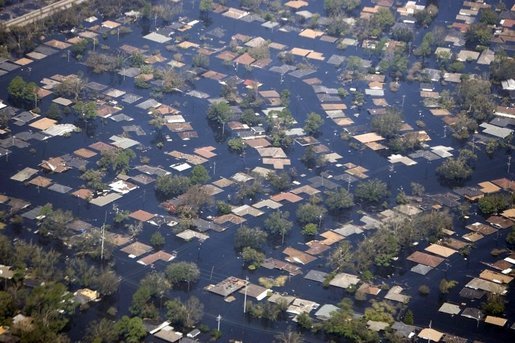
Floodwaters can take weeks to recede and are some of the most toxic things you’ll ever come into contact with. Every oil spill, every bit of just-fertilized land, every nasty chemical someone has spilled in their yard gets mixed in with floodwater and can contaminate other surface water as well.
Oh, and some of those chemicals don’t come out even if you distill the water. Petrochemicals and some fertilizers can aerosolize and move with steam making it difficult if not impossible to make this water drinkable.
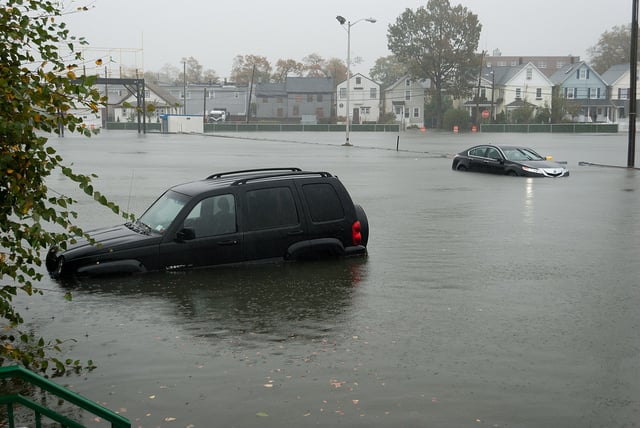
If you live in a flood-prone area, potable water should be at the top of your list of things to stockpile. If not, then consider investing in a small distillation filter and active carbon filters as well.
This doubled-up approach should remove most contaminants and is a good bit of extra safety for the average person.
Beyond that, this is another one we want to keep a bag packed for. Having a few days worth of food, water, and gear for each member of your family may seem like a lot, but it can shave hours off your evacuation time which can be the difference between making it out and being trapped by road closures.
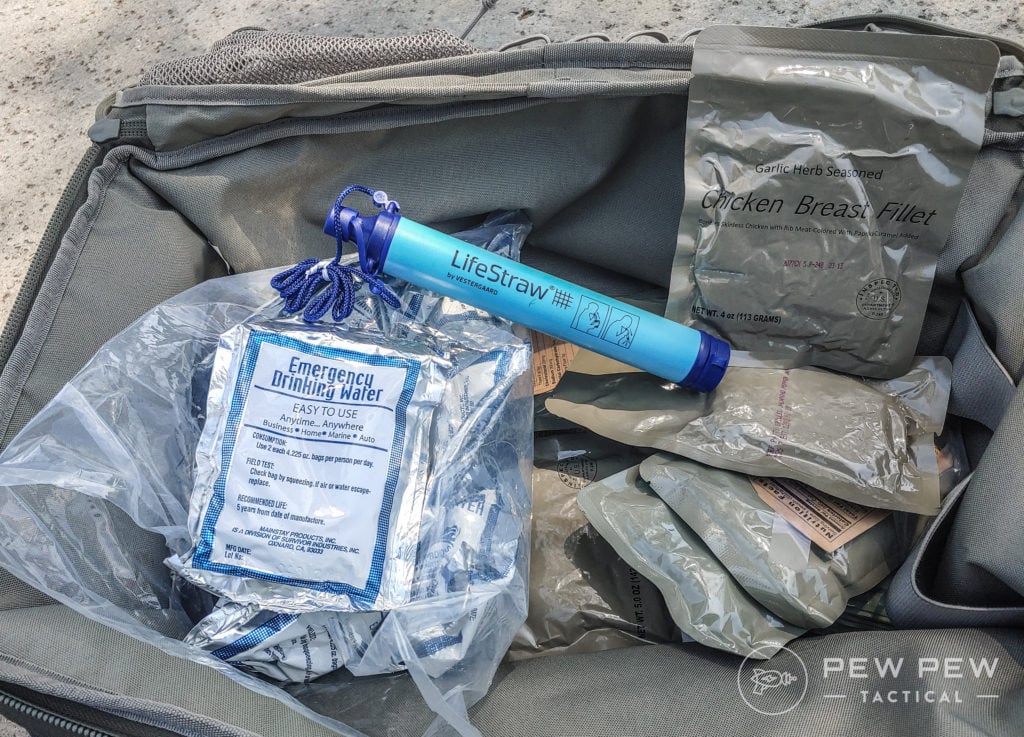
Final Thoughts
Whew! That was a lot, but hopefully, you now know everything you need to know about stockpiling for all kinds of disasters. We primarily focused on food and water here, but this should be a good jumping-off point for more research and more skill-building.
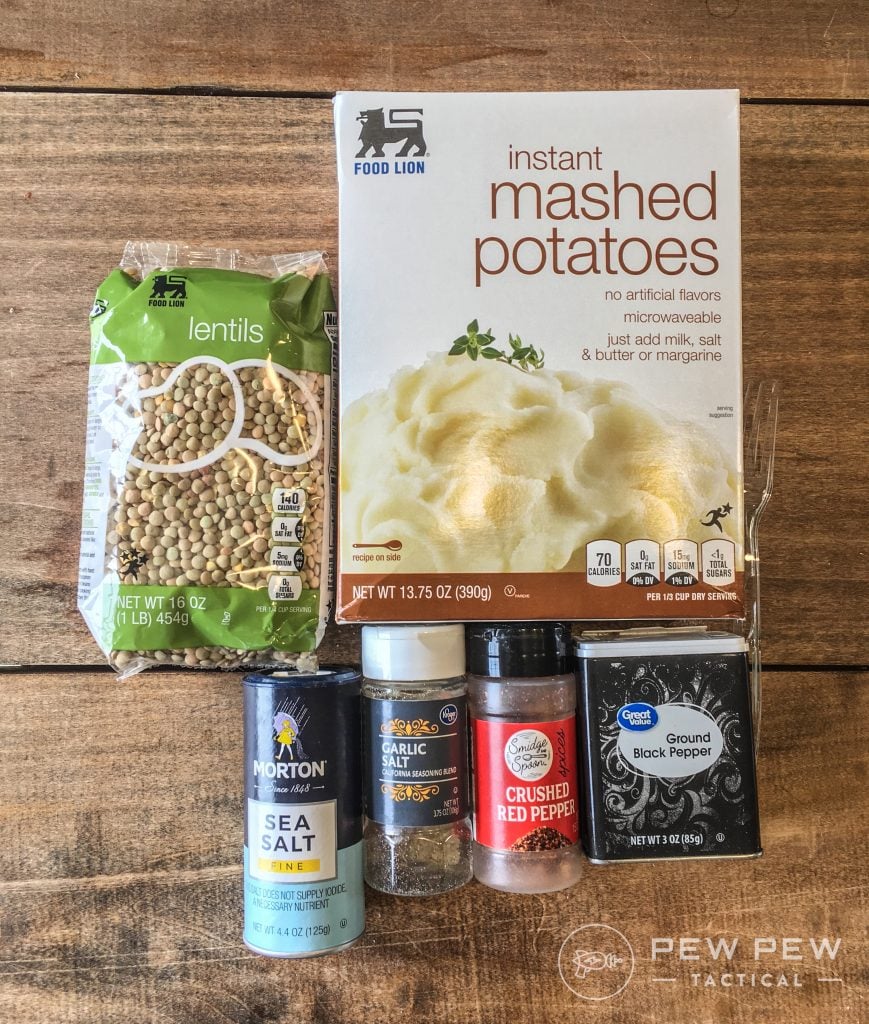
Remember, it’s totally possible for the average family of four to have two to three months of extra food in the pantry without any issues as long as you’re smart at the store. Water filters are easy to store, and bottled water is cheap.
Everything beyond that is really just tailoring your stockpile to your own needs and budgets. The most important thing you can do is be honest with yourself about what you are most likely to need in the event of a disaster.
What do you think of these emergency stockpiling tips? Do you have anything you want to share with the rest of us? Let us know in the comments below! Get started building your Ultimate Bug-Out Bag with our guide today!

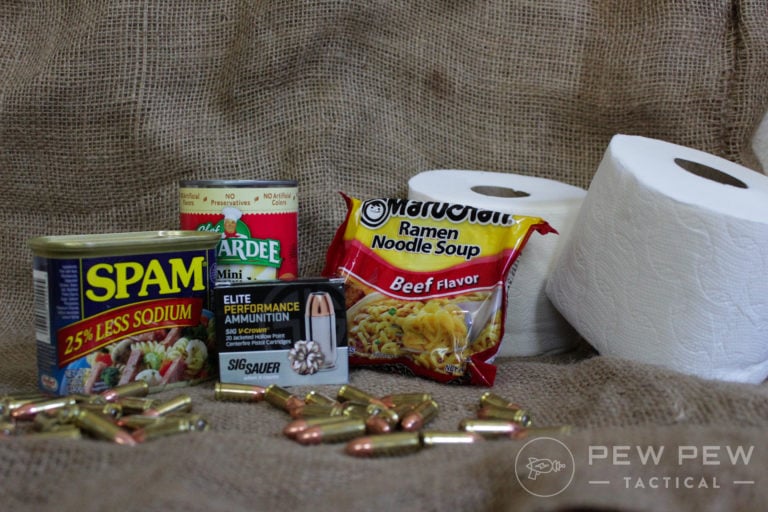


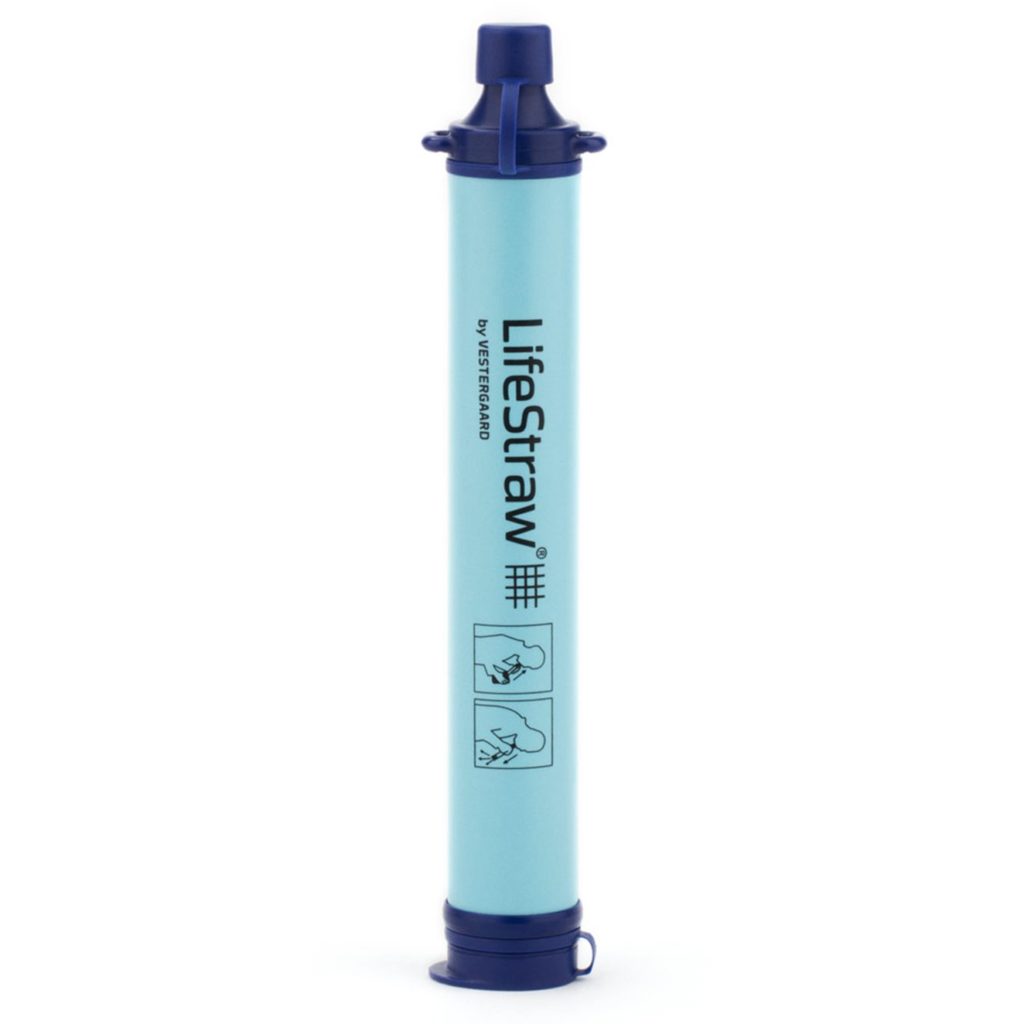



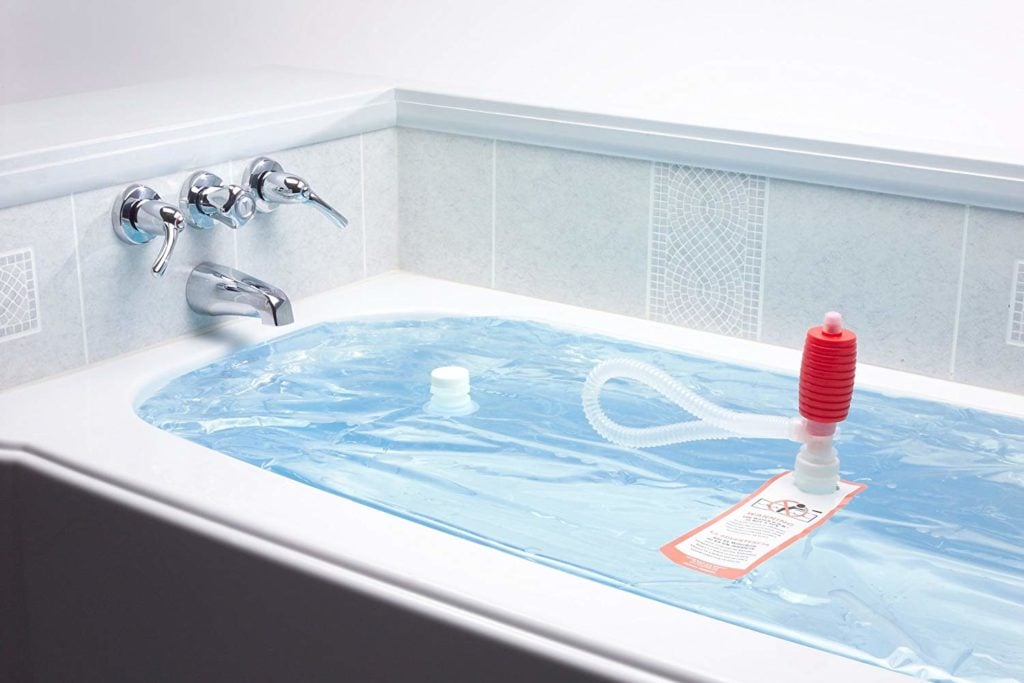









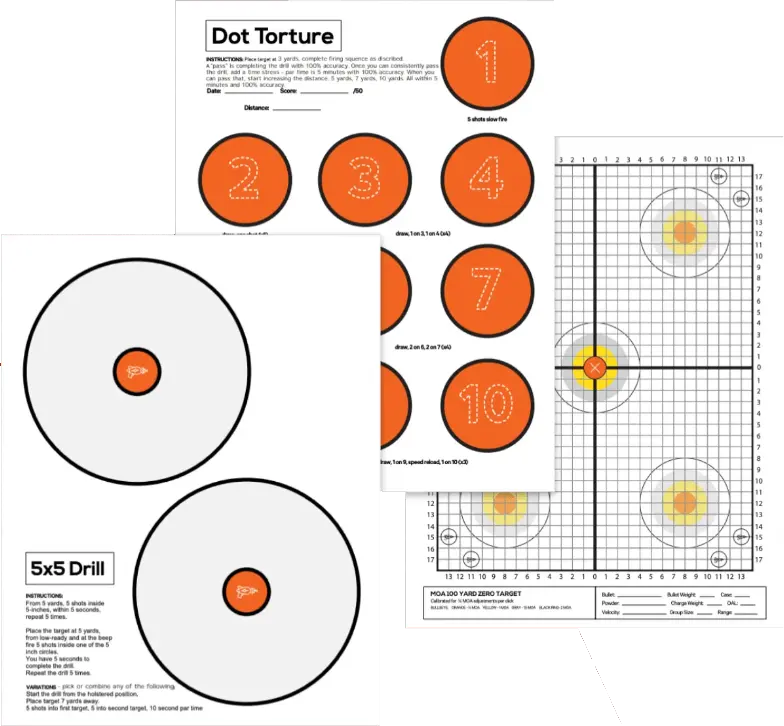
5 Leave a Reply
I discovered your blog site on google and check a few of your early posts. Continue to keep up the very good operate. I just additional up your RSS feed to my MSN News Reader. Seeking forward to reading more from you later on!
Love the articles but put definitive issue dates on them...none of this 3 days ago, 4 months ago, etc....poppycock!
I like your approach of working your food stockpile into your daily meal rotation. Not only does it keep dates fresh and minimize waste, but if more people did this, we'd have less panic buying like we saw earlier this year.
Spam, canned tuna or albacore, canned salmon, Underwood's deviled ham and deviled chicken (both canned) keep a long time and are protein sources, jars of peanuts (if you're not allergic) freeze dried fruit, dry soup mixes, sardines and other canned meat, beef, pork and turkey can be had fairly cheaply and keep a fairly long time (two years) plus they don't need to be cooked. Canned beans (notice a pattern? Proteins!) Discount groceries (we have a few in Northern Indiana) and bulk stores like Sam's club and Costco are great places to buy canned goods that store for decent amount of time and have decent selections (for now anyway) we buy 3 to 4 extra items (in bulk) every shopping trip.
Life long Gulf Coast dweller here, and have been through many hurricanes over the years, including being at ground zero for Katrina. A few things to consider - sometimes you will end up with a lot more folks in your household than you might plan to have. Both my in-laws lost their homes to Katrina so they had to come live with us for a couple of months. Be sure to have a lot more food than you think you'll possibly need. We ran out of many things after about 4 days. You may be doing a lot of physical work, think removing trees and cleaning out flooded flooring, so you burn a lot more calories than normal. Also fuel. You mentioned propane, which is excellent, but you probably also need some charcoal or other alternative fuels in case there is a problem with your propane devices. And if you are planning on running a generator, they use a LOT more fuel than you might think. A good duel fuel generator is your best bet since fuel can be hard to find in the days or weeks after a disaster. One more thing - you mentioned the downsides of storing water in your bathtub, but typically that is used to flush the toilet, so does not need to be all that clean.